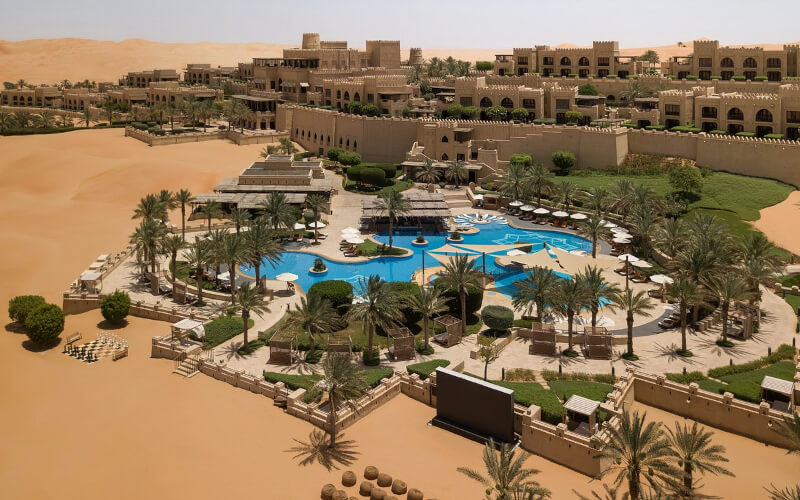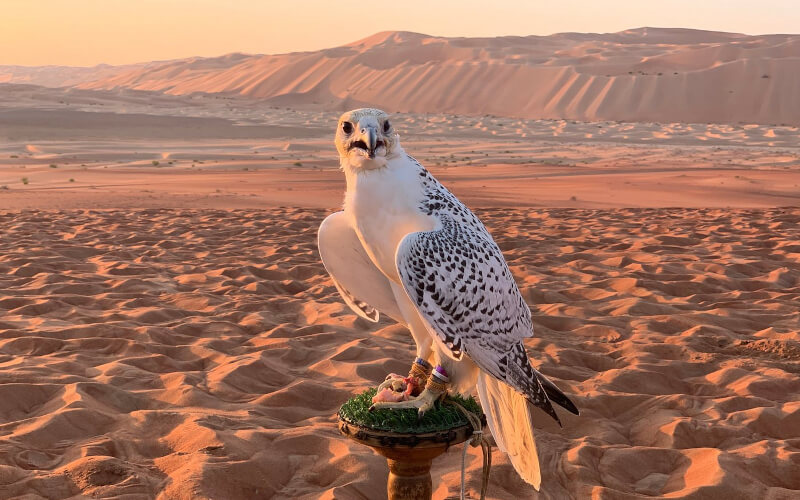A two-hour drive south of Abu Dhabi’s glistening skyscrapers is the Rub’ al Khali, or Empty Quarter, an endless expanse of sand that is at once luxurious and rugged — and like no other place on Earth.
Ben Roberts is a skilled navigator. The British photographer, who calls the Spanish mountain town of Cercedilla home, is adept at orienteering, a sport that sends competitors racing through wild terrain with just a compass and a map. As a young adult, he won national titles and represented Great Britain at the Junior World Orienteering Championships. Yet, in the Empty Quarter the world’s largest sand desert, which spills into the United Arab Emirates, Saudi Arabia, Oman and Yemen, spanning a geographical area greater than France he was lost. And he couldn’t believe it when his driver veered off the road to take on 30 miles of dunes without a map, compass or GPS, ending up exactly where he intended. “I live in the mountains, with pine trees and lakes,” Roberts says. “In the desert, all those elements are stripped down to sun, sky and sand. There’s no visible water, no green. I felt completely not of that place, more than anywhere I’ve ever been.”
Like a sandcastle erupting from the dunes, Qasr Al Sarab Desert Resort by Anantara offers unmatched access to the world’s largest uninterrupted sand mass, where dunes reach heights of more than 900 feet.
The best way to feel the scale of the desert is to hike among the dunes, or “mountains of sand,” says Roberts. “You can walk from Qasr Al Sarab and, by the time you get to the top of the closest dune, you’re just a tiny speck on the horizon.” It’s no stroll on the beach, though: “Every step you take, you’re taking a step back,” he says. “It’s quite a strange feeling to be so high up and not on solid ground.” Dusk is an ideal time to venture out, when the scorching sun has set, and the star-filled sky illuminates the sand.
Falconry is an important element of Emirati culture, practiced for more than 2,000 years. The traditional sport is on display at Qasr Al Sarab where the resort’s eight falcons and team of animal handlers put on daily falcon and Saluki dog shows against the spellbinding backdrop of the desert. “It’s an atmospheric experience,” Roberts says, “being in the middle of the desert and watching how a native bird tracks and hunts prey, and the speed at which it travels.”
Sweet, plump, rich in fiber and native to arid climates: It’s no wonder dates are treasured throughout the Middle East. The Liwa Oasis, a 60-mile stretch of green within the golden dunes on the northern end of the Empty Quarter, is awash with date trees, thanks to a water table near the surface. The local desert fruit is celebrated annually at the Liwa Date Festival, where Emirati farmers compete for Best Date Fruit and Best Date Grower.
The Liwa Oasis is the ancestral home of the Bani Yas tribe, who built forts throughout the region to protect their prized fertile land. Mezair’ah Fort is one of the most accessible: Visitors are free to walk inside the imposing walls of the century-old mud-brick structure, exploring its courtyard and round watchtowers.
With multiple buildings, turrets and courtyards (plus restaurants, pool bar and spa), Qasr Al Sarab resembles the fortresses of ancient Arabia. The sprawling 19,000-acre property, with views of the dunes from every window (many of which feature traditional mashrabiya coverings), contains a comparatively few 207 rooms, suites and villas, providing lavish space and privacy for guests. “It’s like a labyrinth,” says Roberts. “You can wander around and get lost in it.” Not unlike the desert itself.







